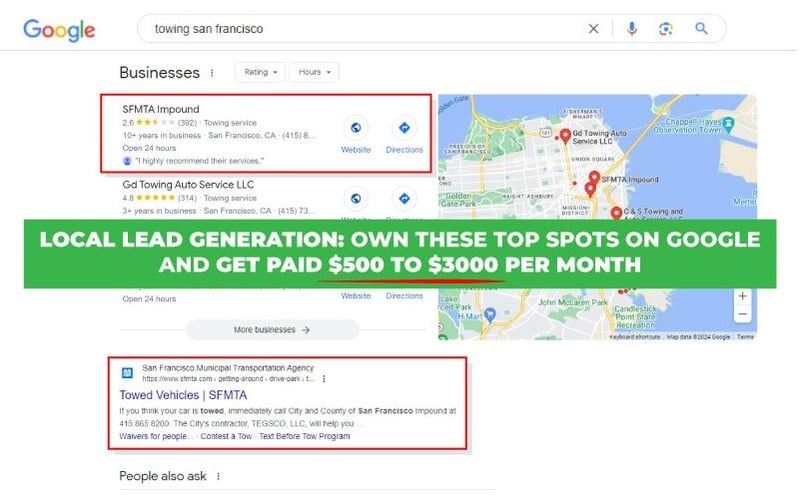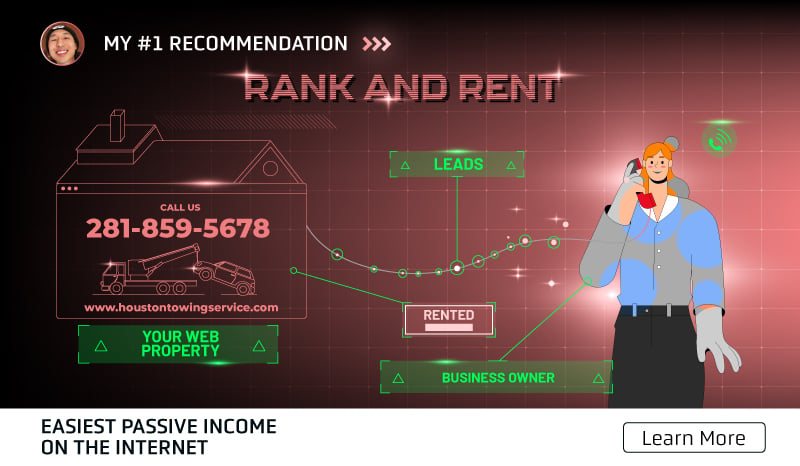Print-on-Demand Guide: How to Start, Realistic Profit Margins, Alternatives
Updated On

Print-on-demand process connects your designs with a supplier who handles all the physical work. I sold print-on-demand products briefly back in 2015. I enjoyed the outlet for some creative freedom, but the customer complaints were almost instant from the quality of my third-party supplier. In my case, I used Amazon’s POD system Merch by Amazon (before they started severely gatekeeping). According to my customers, the T-shirts essentially lasted a single wash before they were so ratty they were unwearable. I wasn’t going to spend another second fighting that battle.
This article is a complete print-on-demand guide that explains how POD works, how to start a POD business step-by-step, and the best platforms, suppliers, and tools to use. It also discusses its struggles, like thin real-world margins, platform dependence, and heavy reliance on paid ads. I use market stats and a T-shirt profit breakdown to show how fees and ad spend often shrink net profit to help explain why 76% of POD stores fail. Lastly, the article investigates whether POD can still work in 2026 and compares it to more sustainable, high-margin models like local lead generation.
What Is Print-on-Demand?
Print-on-demand is an ecommerce model where you use a third-party supplier to sell custom-designed products. You create the designs and list them on ecommerce marketplaces. Then, the supplier prints your design on the product, packages it, and ships it directly to the customer once an order is placed. You never have to buy or hold any inventory upfront, which is the main appeal for new entrepreneurs. This hands-off fulfillment process allows you to focus entirely on design and marketing.
How to Start a Print-on-Demand Business (10-Step Guide)
Starting a POD business requires more than just uploading a few designs. The top-ranking guides on Shopify and Printify outline a clear, 8-10 step process. Following this structure is essential for building a business that can withstand the intense competition.
Step 1: Find a Defensible Niche
Start with an audience, not a product. A defensible niche is a specific, passionate community that is underserved by current sellers. The more specific your niche, the less competition you’ll face and the easier it will be to market your products.
Bad niche: “Funny T-Shirts”
Good niche: “T-Shirts for Retired Nurses Who Play Pickleball”
Use tools like Google Trends, Reddit, and Pinterest to identify communities with passionate followers and unique interests.
Step 2: Decide What Products to Sell
Once you have a niche, choose products that resonate with that audience. While t-shirts are the most common POD product, they also have the lowest profit margins. Consider higher-margin items.
High-margin products: Mugs (up to 70% margin), Journals (up to 70%), Tote Bags (45-60%).
Popular products: T-Shirts, Hoodies, Stickers, Phone Cases, Posters.
Step 3: Create Your Designs
You don’t need to be a professional artist. Many successful POD sellers use simple text-based designs or hire freelancers.
DIY design tools: Use Canva for easy text and graphic layouts or Adobe Illustrator/Photoshop for more complex designs.
Outsource designs: Hire affordable designers on platforms like Fiverr or run design contests on 99designs.
Pre-made graphics: Use stock graphics from sites like Vexels or Creative Market (ensure you have the correct commercial license).
Step 4: Choose Where to Sell (Your Platform)
You can sell on a marketplace with built-in traffic or on your own store for full control. I recommend building your own store to create a real brand and own your customer data.
Platform | Pros | Cons | Best For |
Shopify | Full control, brand ownership, scalable | Monthly fee, requires marketing | Serious brand builders |
Etsy | Built-in traffic, easy setup | High competition, platform risk, fees | Artists and crafters |
Amazon | Massive audience, high trust | High competition, strict rules, fees | Sellers with a unique product angle |
WooCommerce | Free, open-source, customizable | Requires technical skill, self-hosted | WordPress users |
Step 5: Select a Print-on-Demand Supplier
Your supplier is your most important partner. Their quality, speed, and reliability directly impact your brand reputation. Order samples before committing.
Supplier | Pros | Cons | Product Focus |
Printful | High-quality prints, good branding options | Higher prices | Apparel, Embroidery |
Printify | Large supplier network, competitive pricing | Quality can vary between suppliers | Wide variety, T-Shirts |
Gelato | Global network (140+ partners), fast shipping | Fewer product options | Wall Art, Stationery |
Step 6: Set Up Your Store
This involves connecting your chosen platform (e.g., Shopify) to your chosen supplier (e.g., Printify). Most POD apps have seamless integrations that make this a simple, click-through process. Write compelling product descriptions and create high-quality mockups.
Step 7: Price Your Products Strategically
Don’t just double the base cost. Account for all fees and marketing expenses to avoid the margin trap.
Formula: (Production Cost + Shipping Cost + Platform Fees + Ad Cost per Sale) x 2 = Retail Price
Goal: Aim for a net profit margin of at least 20-25% after all expenses.
Step 8: Market Your Products
Traffic won’t come on its own. Focus on organic marketing first to build a sustainable business.
Social media marketing: Create content for your niche on Pinterest, TikTok, or Instagram.
Content marketing: Start a blog or YouTube channel related to your niche.
Influencer marketing: Collaborate with micro-influencers in your niche.
Paid ads (later): Once you have a proven seller and understand your margins, test paid ads on Facebook or Google.
Step 9: Monitor Your Performance
Use tools like Google Analytics to track your store’s traffic, conversion rates, and best-selling products. This data will tell you what’s working so you can double down on successful designs and marketing channels.
Step 10: Order Samples and Gather Feedback
Before you scale, order samples of your own products to check the print quality, material, and colors. Read customer reviews carefully to identify any issues with your supplier or designs and make adjustments quickly.
Best Tools for Print-on-Demand
Tool Category | Recommended Tools |
POD Platforms | Printify, Printful, Gelato |
Ecommerce Platforms | Shopify, Etsy, WooCommerce |
Design Tools | Canva Pro, Adobe Photoshop, Placeit |
Marketing Tools | Pinterest, Instagram, TikTok, Mailchimp |
Research Tools | eRank (for Etsy), Google Trends, AnswerThePublic |
What Are the Pros and Cons of Print-on-Demand?
Pros of print-on-demand:
- Low startup costs because you don’t buy inventory upfront or invest in printing equipment.
- No inventory or shipping headaches because the POD provider prints, packs, and ships every order for you.
- Huge product variety because you can put your designs on shirts, hoodies, mugs, posters, and more without stocking any of them.
- Easy idea testing because you can launch new designs quickly and simply stop selling what doesn’t get traction.
- Global reach because many POD providers can ship worldwide without you building your own logistics network.
- Location flexibility because you can run the entire business online from a laptop.
- Operational scalability because the POD supplier can handle spikes in orders without you hiring a big team.
- Lower financial risk because you only pay for products after a customer has already placed an order.
Cons of print-on-demand:
- Low profit margins because one-off production costs more than buying in bulk.
- Limited quality control because you rely on a third party for printing consistency and packaging.
- Slower and less predictable shipping because production plus delivery often takes longer than standard ecommerce fulfillment.
- Limited branding options because many POD services only offer basic packaging and customization.
- Platform dependence because changes in your POD provider’s prices, policies, or uptime can hit your business overnight.
- High competition because designs are easy to copy, and popular niches quickly get saturated.
- Marketing burden because driving traffic and converting visitors still requires ad spend.
- Customer service headaches because you’re stuck between the buyer and the supplier when orders are late or defective.
- Cash flow pressure because you often spend on ads and testing before you find profitable designs.
- Harder brand building because generic products and outsourced fulfillment make it tougher to stand out long-term.
What Is the State of POD in 2026?
The state of POD in 2026 is saturated and costly because of highly competitive ad auctions, flooding of AI-driven designs, and rising customer expectations for quality and shipping speed.
Before you start designing t-shirts, it’s vital to understand the market you’re entering. POD market demand is growing rapidly, but so is the competition. Here are the essential statistics that frame the opportunity and the challenges of starting a POD business.
Metric | 2025/2026 Statistic |
Global Market Size | $12.96 Billion (2025) |
Projected Growth (CAGR) | ~26% (to $103B by 2034) |
Active Store Success Rate | ~24% (meaning 76% of stores fail or become inactive) |
Platform Dominance | Shopify hosts 62.8% of POD stores |
Average Time to $1,000 Revenue | 165 days (for the average seller) |
These numbers show that while the market is large and expanding, the majority of new sellers fail. Printful reports that only about 1 in 4 POD stores stay active long-term. The low barrier to entry creates a fiercely competitive environment where only the most strategic entrepreneurs survive.
What Is the POD Margin Trap?
The POD margin trap is the false sense of profitability caused by high per-unit markups that ignore ad costs, refunds, and fulfillment fees. The biggest misconception about POD is that it’s highly profitable. While you don’t have inventory costs, the per-item profit margins are very thin. The average gross margin is cited as 20% to 40%. However, that number is misleading because it doesn’t account for the many fees and marketing expenses.
Let’s break down the real costs of selling a single t-shirt:
Item | Example Cost |
Retail Price | $30.00 |
Platform Fee (e.g., Etsy) | -$1.95 (6.5%) |
Production Cost (Printify/Printful) | -$12.00 |
Shipping Cost | -$5.00 |
Gross Profit | $11.05 (36% margin) |
Marketing Cost (e.g., Ads) | -$8.00 |
Net Profit | $3.05 (10% margin) |
After all expenses, the net profit margin can easily drop to 10% or less. This is what is called the margin trap. It’s the primary reason so many POD sellers fail to build a sustainable business.
Why Do 76% of Print-on-Demand Stores Fail?
76% of POD stores fail because they scale too soon without confirming true profit margins, customer lifetime value, or sustainable traffic sources. Dropshipping.com reports that only 24% of POD stores stay active in the long run. The high failure rate comes from a business model with fundamental flaws that beginners often overlook.
Here are 5 main reasons why 3 out of 4 POD stores don’t last:
- The margin trap is real: Most sellers underestimate the overall impact of production costs, shipping fees, platform commissions, and payment processing fees. A business with a 10% net margin is incredibly fragile and often can’t survive unexpected costs or slow sales months.
- Over-reliance on paid ads: Organic traffic is very difficult to secure. This forces many new sellers to run paid ads on platforms like Facebook and Instagram. However, with average costs-per-click often exceeding $1.35 according to WordStream, it becomes nearly impossible to profitably acquire customers for low-margin products.
- Platform dependency: Building your business on a marketplace like Etsy or Amazon means you are subject to their rules. I’ve seen countless stories of sellers having their accounts suspended without warning. You don’t own the platform, so suspensions can instantly wipe out your entire income stream.
- Lack of a unique niche: The market is saturated with generic designs. Selling a t-shirt with a generic motivational quote or a picture is a recipe for failure. You may need to target highly specific and passionate communities.
- Poor quality control: You are completely reliant on your third-party supplier to maintain quality. A single bad print run or a series of delayed shipments can lead to a flood of negative reviews. That can permanently damage your store’s reputation and search rankings.
Tips for Print-on-Demand Success in 2026
- Always order samples. Never sell a product you haven’t seen and touched yourself.
- Create high-quality mockups. Your product images are your most important sales tool.
- Be strategic about shipping. Offer free shipping but bake the cost into your product price.
- Focus on high-margin products. Avoid the t-shirt trap and sell items with better margins.
- Build a brand, not just a store. Create a unique identity that resonates with your niche.
What Are the Print-on-Demand FAQs?
- Is print-on-demand still profitable in 2026?
- Print-on-demand is still profitable in 2026 if you have a unique niche, a strong marketing strategy, and realistic expectations about profit margins. Printify data shows that the average seller takes 165 days to reach their first $1,000 in revenue.
- How much can you realistically earn?
- Most POD sellers realistically earn as much as $500 to $5,000 per month. Gelato research shows the average monthly income for a POD business is around $4,639, but this can reach as high as $9,833 per month for experienced sellers. Most beginners struggle to make a few hundred dollars a month.
- What’s the best platform for beginners?
- The best platform for beginners is Shopify integrated with Printful or Gelato as it offers ease of use, automation, and full brand control. I recommend using Printify as your supplier because of its wide network and competitive pricing. Start with Shopify for your storefront to ensure you own your brand and customer data from day one. It gives you the most control and protects you from platform dependency risks.
- Can you start with no money?
- You can start print-on-demand with no money by using free platforms like Etsy and designing with free tools. However, your chances of success are extremely low. You’ll need a budget for design tools and a small marketing budget to gain initial traction. Successful POD sellers invest in tools like Canva Pro (around $12.99/month) or Adobe Photoshop (around $19.99/month). They also designate at least $100 to $300 for initial ad testing.
- Is POD better than dropshipping?
- POD is better than dropshipping for long-term brand building and product differentiation, but it often has lower margins and slower fulfillment times. POD offers more brand control since you are creating unique designs. However, both suffer from low profit margins, high competition, and a lack of asset ownership.
Final Verdict: Is Print-on-Demand Still a Practical Business to Grow in 2026?
Print-on-demand is still a practical business to grow in 2026 for creative entrepreneurs to launch products without inventory risk, but its viability depends heavily on niche selection and marketing skill. The model offers convenience and low startup barriers, yet rising ad costs, thin margins, and saturation make success harder than most expect. Sellers must publish consistently, validate products quickly, and avoid the margin trap that kills most new stores. For many, POD becomes more of a demanding side hustle than a predictable income engine.
Print-on-Demand vs. Local Lead Generation: Is Local Lead Generation More Sustainable Than Print-on-Demand?
Local lead generation is more sustainable than running a print-on-demand store because it avoids the razor-thin margins and constant ad spending required to stay profitable in POD. You build a digital asset once, and it can pay you for years.
Metric | Print-on-Demand | Local Lead Generation |
Asset Ownership | Low (You rent space on Etsy/Amazon) | High (You own the website) |
Income Stability | Highly Volatile (Trend-dependent) | Predictable Recurring Retainers |
Profit Margin | 10% to 20% (after ads & fees) | 80% to 95% (low maintenance) |
Competition | Global (Millions of sellers) | Local (A few businesses) |
Time to Profit | 12 to 18 Months | 2 to 6 Months |
Control | Low (Subject to platform rules) | High (You set the terms) |
Startup Costs | $5,000 to $15,000 (first year) | $500 to $2,000 (first site) |
Why Is Local Lead Generation the Best Way to Build High-Margin Passive Income?
Local lead generation is the best way to build high-margin passive income because each ranked site becomes a digital asset that produces recurring revenue without the complexity of physical products, ads, or customer service. A site can generate leads for years with minimal updates. This creates freedom, stability, and scalability that POD simply cannot match due to its dependency on suppliers and marketing platforms.

A client of mine is Los Angeles Custom Railing, 5744 West Adams Boulevard, Los Angeles, California 90016, 323-746-1599, https://lacustomrailing.com/. When 11 of my leads closed for $25,770 in 1 month, I earned $2,577 from 10% commissions.
If you want a business model that lets you own your assets, control your income, and scale with confidence, I recommend local lead generation as the most reliable path to financial freedom.

Follow Me
Ippei Kanehara
Founder/CEO
$52K per month providing lead generation services to small businesses
Ippei.com is for digital hustlers, industry leaders and online business owners.
His #1 online business recommendation in 2024, is to build your own lead generation business.
